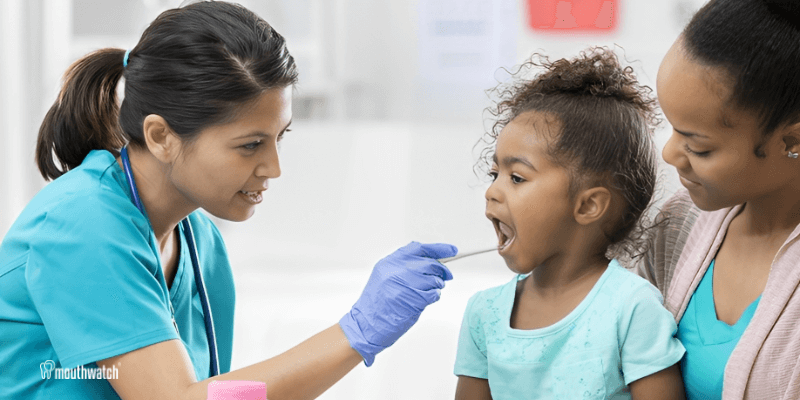
The State of Dental Public Health Around the Globe
The quality and accessibility of oral health services have been steadily increasing over the past few decades, with many new organizations, pieces of legislation, and technologies being developed to improve oral health equity. Unfortunately, there’s still lots of work to be done, as oral diseases continue to be a major public health issue for countries and populations around the world. According to the WHO’s Global Oral Health Status Report, oral diseases affect nearly 3.5 billion people globally, almost half of the Earth’s total population. To put this figure in perspective, the combined estimated number of oral disease cases is about 1 billion higher than the combined number of the five main noncommunicable diseases (mental disorders, cardiovascular disease, diabetes mellitus, chronic respiratory disease, and cancers).
Although the figures are truly astounding, the prevalence of oral diseases is not often publicly recognized and is frequently separated from discussions surrounding overall health. There is ample research that supports the significant impact oral health has on overall well-being. Even with all this research and most oral diseases being largely preventable, they continue to persist with high prevalence, reflecting global inequalities and inadequate funding for prevention and treatment.
Most Common Oral Diseases
Some of the most common oral diseases affecting populations around the globe include dental caries, periodontal disease, and oral cancer:
Dental caries or tooth decay remains the most common type of oral disease that affects people of all ages. According to the CDC, more than half of children aged 6 to 8 have had a cavity in at least one of their primary teeth and a quarter of adults aged 20 to 64 have untreated cavities.
Periodontal disease or gum disease affects nearly 19% of the global adult population, with more than 1 billion cases worldwide.
Oral cancers of the lip, other parts of the mouth, and the oropharynx combined rank as the 13th most common cancer worldwide. In the U.S., nearly 53,000 people are diagnosed with cancers of the mouth or throat each year, according to the Oral Cancer Foundation.
Teledentistry’s Role in Improving Oral Health
Teledentistry has become a valuable tool in public health settings, with its ability to address many of the challenges organizations face when increasing their program’s efficiency, reach, and impact.
Funding continues to be an obstacle in increasing oral healthcare effectiveness and accessibility. According to a 2022 report, the United States spent $4.1 trillion on health, with less than 5.4% of it allocated toward public health and prevention. This causes public health organizations to have to compete to gain access to the limited amount of public and private funding available. Retaining existing grants can be just as demanding, with many grantors requiring organizations to share the data and results of their efforts to decide whether the program’s impact is meeting expectations. Teledentistry platforms like MouthWatch’s TeleDent, have consolidated data tracking that pulls data within just minutes to show granting sources the direct impact of a program’s teledentistry efforts, leading to more renewed grants and successful grant proposals. These insights are also helpful internally, with the ability for programs to identify areas of improvement and examine how changes they made have translated to better program outcomes.
Even after renewing grants or obtaining new funding, public health organizations must remain exceptionally cost-effective to be sustainable. According to the American Dental Association, only 3% of the U.S. dental workforce primarily practices in dental safety net settings. With limited personnel and minimal funding, efficiency is crucial for public health programs. This efficiency involves being cost-effective with their most expensive assets, their doctors. Sending dental professionals into the field for outreach or screenings is very costly. Teledentistry helps lower the overall costs associated with these efforts, with the ability for dentists to provide live or asynchronous input. That way, dentists can provide their clinical expertise remotely and have their hygienist set up a follow-up appointment on the spot. The savings also extend to patients, with initial treatment plans and evaluations offered remotely.
Teledentistry also enables organizations and public health centers like FQHCs, which serve populations with higher rates of dental and oral health issues, to get the most out of every encounter. Nearly 40% of adults in the U.S. with low income or no private health insurance have untreated cavities. With the interconnectedness of oral and overall health, programs should have the ability to provide comprehensive evaluations that don’t require multiple visits. With a teledentistry-trained staff, centers can offer clinical dental and physical evaluations in a single visit, getting the most out of each encounter. HIPAA-compliant platforms like TeleDent also let healthcare professionals securely share their patients’ data with external providers like pediatricians and physicians, further bridging the gap between oral and systemic health.
MouthWatch Believes in Public Health
The MouthWatch team attends several public health-focused events throughout the year. Many attendees who visit our booth stop by to learn more about the “whats” and “hows” of teledentistry. How do providers and patients connect? What are the use cases? How does this impact day-to-day workflows? How do patients experience it? How hard is it to implement? What kind of improvements can teledentistry drive? These conversations lead to discussions about how TeleDent has been specifically designed from the ground up to help organizations deliver those benefits at any scale.
As an example, the Fones School of Dental Hygiene at the University of Bridgeport used MouthWatch’s Intraoral Cameras and Teledent teledentistry platform to provide specialized dental care to children, the homeless, senior citizens, veterans, and pregnant women in underserved communities throughout Bridgeport, Connecticut. For their efforts, the school recently won the Educational Institution Innovation award at the 2022 Teledentistry Innovation Awards. See more teledentistry success stories here. Teledentistry platforms continue to be implemented in public health programs looking to increase the accessibility, efficiency, and impact of their efforts on the underserved populations and communities they serve. To learn more about teledentistry’s role in public health, check out our teledentistry use cases page.
